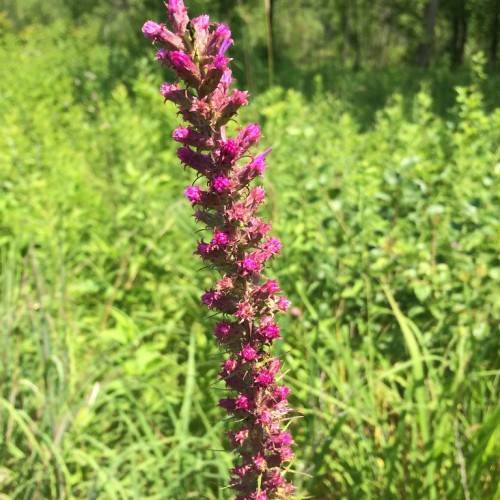
prairie blazing star
Liatris pycnostachya
Cycle:
Herbaceous Perennial
Watering:
Minimum
Hardiness Zone:
3 - 9
Flowers:
Flowers
Sun:
Full sun
Leaf:
Yes
Growth Rate:
Low
Maintenance:
Low
Drought Tolerant:
Yes
Salt Tolerant:
Yes
Care Level:
Medium
watering
Prairie blazing star (Liatris pycnostachya) needs to be watered moderately and consistently. Aim to give the plant 1-2 inches of water per week, either through rain fall or manual watering. Water in the morning and avoid wetting the plant's foliage. Monitor the soil moisture, as overwatering can lead to root rot. During hot, dry spells, increase watering to ensure the plant does not become wilted. During the spring and summer, when the plant is actively growing, water more consistently. During the fall and winter, when the plant is dormant, reduce watering but be sure not to let the soil become too dry.
sunlight
Prairie blazing star (Liatris pycnostachya) requires full sun in order to thrive. During the growing season (spring through fall), this species of wildflower should be exposed to 6 to 8 hours of direct sunlight each day. During the winter, when the plant is dormant and not actively growing, it is naturally exposed to fewer hours of sunlight and can still remain healthy.
pruning
Prairie blazing star (Liatris pycnostachya) should be pruned lightly in the spring just after new growth begins. Start by removing any dead or diseased stems that may have survived the winter, followed by any that are discolored or have yellowed foliage. Additionally, take off any weak stems to help promote a more compact form and increased flowering. Once this has been done, it’s time to shape the plant. Deadheading or removing spent flower stalks is beneficial as it can encourage a re-bloom. This is best done when flowering has finished and just before seed pods form. Trim away weak or long stems so the plant maintains a well-rounded shape, and don’t forget to remove any straggly stems. Finally, you may want to lightly prune the center of the plant to help promote air circulation and reduce the possibility of diseases. This should be done in late summer or early fall. Overall, only light pruning should be done to maintain the desired form and prevent over-pruning. Always double-check with your local nursery for advice about the best pruning practices for your particular species.
